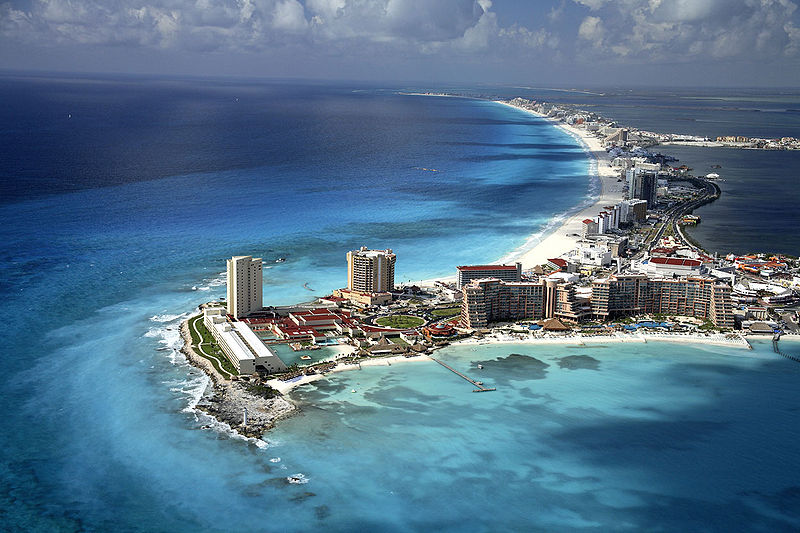This post is written by World Resources Institute Climate Director Jennifer Morgan, and is reprinted courtesy of WRI.
Why does Cancun matter?
Unlike Copenhagen, this year’s climate meeting in Cancun, COP-16, is not expected to result in a comprehensive legally binding agreement. However, countries could use the meeting to make significant progress toward change on the ground. In order to achieve this, countries need to move past their current negotiating positions and find solutions. They will also need to map a process to finalize any decisions, and decide the eventual legal form of the agreement. If Cancun does not bring progress, much of the energy around an international agreement will likely move from the United Nations Framework Convention on Climate Change (UNFCCC) to other fora. That makes this is a key juncture for the U.N. process to remain at the center of an international climate agreement.
What decisions can be made in Cancun?
In addition to finding a way forward under the Kyoto Protocol, the goal for the COP is to conclude with a “balanced package of decisions” that will move negotiations forward on a number of key issues. This so-called “balanced package” includes a range of issues [see below] which hold different importance to countries. Negotiators must find balance both within each issue and among the issues. They must also complete the decisions that were nearly finalized in Copenhagen, take note of the Copenhagen Accord which referenced most of the issues, and launch a number of new mechanisms and possibly decide to create the so-called Copenhagen Green Fund. This process includes decisions to:
- Establish a technology mechanism — including a climate technology network and center — that will help countries develop and share new technologies
- Establish an adaptation framework
- Establish a REDD+ mechanism
- Create a finance mechanism/fund
Negotiators need to flesh out the substance behind each of these decisions, agree to those core elements, and map out a process to finalize the details by next year’s meeting in South Africa.
Fortunately, just in the past month, there has been progress on a number of these issues which should assist countries in finding agreement. It is not likely, however, that these decisions will move forward without negotiators agreeing to the full balanced package.
What other issues remain contentious?
Countries need to think about how to address the so-called “crunch issues:” transparency, mitigation and legal form.
On transparency, developed countries want to know that they can adequately compare each others’ targets. In order to do so, negotiators need to agree to common metrics for accounting of developed country emissions targets. Currently, robust rules exist for reporting and comparing targets under the Kyoto Protocol, but no such metrics exist for Copenhagen Accord pledges.
On finance, developed countries need to be more transparent on who is funding what and where. This could be done through a decision to create guidelines for a common reporting framework and a process to fill in the details.
Transparency around developing countries actions to reduce emissions is also important. Negotiators will need to decide on a measurement, reporting and verification (MRV) process for developing country actions. Issues around transparency should be linked in the balanced package.
Countries also need to decide what to do with the emissions and actions pledges included in the Copenhagen Accord. There are several options to formalize these pledges in the UNFCCC. As it is clear that these pledges are not enough to avoid what scientists tell us is needed to avoid the worst impacts of climate change, negotiators will need to note the inadequacy, provide an opportunity for countries to strengthen the pledges, and decide that a robust scientific review should occur no later than 2015.
Finally, understanding how the Kyoto Protocol second commitment period links with any decisions or amendments made under the other negotiating track — the Ad Hoc Working Group on Long-term Cooperative Action under the Convention (AWG-LCA) — will be essential for many countries to allow the process to move forward constructively.
What does the United States need to do to help jumpstart the process?
The failure in the United States to pass a comprehensive climate and energy bill will not make the negotiations any easier. However, WRI has found that with existing authorities, administrative agencies — like EPA, DOT, and others — can get the United States in the range of a 17 percent reduction below 2005 levels domestically if the Administration pursues a so-called “go getter” scenario. This is what the United States pledged to in Copenhagen, and should serve as a good starting point for the Administration.
Indeed, in order to reassure other countries of the United States’ intent to meet that target, President Obama should reaffirm his commitment to the 17 percent target and his intent to inscribe it into the UNFCCC. The United States — like several other developed countries — also needs to meet its financial commitments to assist developing countries that were made at Copenhagen.
As the Cancun negotiations are about to kick off, these steps would help show the world that the United States is serious about addressing climate change and moving to a low-carbon future, thus fitting in a key piece of the puzzle for progress in Cancun.



